To describe Japan as unique is a
cliché; it is so different from anywhere else culturally that it is futile to
compare it to anything else. Japan is Japan, it’s as simple as that. The culture though is not the only thing that is
exceptional. Three of the country’s islands are also home to a primate found nowhere else, the Japanese
Macaque Macaca fuscata. It is the only monkey found in Japan, which
is not surprising when you consider the harsh climate of a Japanese winter, when
subzero temperatures are a common occurrence. And, this is what makes this
primate so absorbing. If you examine a map of the distribution of primate
species around the world, one thing that will strike you is that the vast
majority of the species occur in a belt across the middle of the world, in
the tropics. Much of Japan can in no sense of the imagination be considered
tropical, particularly during the depths of winter. Therefore, this monkey is
also the most northerly living species in the world, completely at home living
amongst snow and ice, and not flinching at near daily temperatures plummeting
below zero. Its very nature has led to it being known in Internet circles as
the “Snow Monkey”.
What makes this monkey additionally odd, is that it is know to
regularly bathe in natural hot springs. We headed to the prefecture of Nagano,
and the valley of Jigokudani to see this firsthand. We may have been in the
midst of a bird tour, but this day was all about monkeys, lots and lots of
monkeys. The existence of such a phenomenon as photogenic bathing monkeys, in a
country like Japan, where everyone seems to wield a camera, is therefore far
from secret, and thousands make this primate pilgrimage each year. The park,
after all, has been in existence since the 1960s. on arrival there was no
doubting the well-advertised nature of the “Monkey Park”, as a series of tourist buses
waited in one of the several car parks serving the site. Thankfully, the Japanese
did not consider making a road right up to the monkeys, but instead a 2km walk
is required to get there. This involves a gently rising, snow laden trail,
which passes through tall, snow-dusted pine trees. At the time of our visit, with winter at
its height, there seemed to be little life in the forest, save for the phalanx
of humans walking down the trail. We made our way through this tranquil wintry
scene, and eventually emerged to an opening, where steam rose impressively from
the valley bottom, betraying the volcanic nature of the area. Such dramatic volcanic activity has given rise to its name; Jigokudani means “Hell’s Valley”.
Soon we also saw macaques, dozens and dozens of macaques, seemingly oozing from every rocky surface. Moving further up still we found the famous pool, where the monkeys come to bathe, and there, in the center of the pool, were two red-faced monkeys. Their faces are naturally flushed in the manor of being at the very centre of a joke at their own expense, but sitting in the steaming pool, it gives the false impression that their facial surfaces are reacting to the volcanic heat around them. We had just an hour on site, which many felt may be enough; after an hour there I quickly understood why photographers spend a whole morning, or even days there. Primates are absorbing creatures, with hypnotic behavior; there is simply so much to see and observe over time, particularly with the notoriously cantankerous macaques, which seem to spend an inordinately long amount of time fighting with each other, sometimes within inches of the assembled tourists.
Their boisterous nature seemed never to be tempered by the gathered tourists; often a fight would break out right in the pathway of the surrounding people, some of them jumping aside in alarm, when a macaque came raging towards them. The object of its temper was always another monkey, and not the human tourists, but they seemed completely unabashed, and happy to charge at the offending monkey, even if this meant blasting through a horde of humans!
Soon we also saw macaques, dozens and dozens of macaques, seemingly oozing from every rocky surface. Moving further up still we found the famous pool, where the monkeys come to bathe, and there, in the center of the pool, were two red-faced monkeys. Their faces are naturally flushed in the manor of being at the very centre of a joke at their own expense, but sitting in the steaming pool, it gives the false impression that their facial surfaces are reacting to the volcanic heat around them. We had just an hour on site, which many felt may be enough; after an hour there I quickly understood why photographers spend a whole morning, or even days there. Primates are absorbing creatures, with hypnotic behavior; there is simply so much to see and observe over time, particularly with the notoriously cantankerous macaques, which seem to spend an inordinately long amount of time fighting with each other, sometimes within inches of the assembled tourists.
Their boisterous nature seemed never to be tempered by the gathered tourists; often a fight would break out right in the pathway of the surrounding people, some of them jumping aside in alarm, when a macaque came raging towards them. The object of its temper was always another monkey, and not the human tourists, but they seemed completely unabashed, and happy to charge at the offending monkey, even if this meant blasting through a horde of humans!
Some of the monkey's dense winter coats were waterlogged following a recent dip, while others who were up on a rocky outcrop, well away from the pool, showed a dusting of snow on their thickly-furred chins.
After an hour we reluctantly left
these pink-faced primates behind, as we pointed our cars southwest towards
Komatsu, where our focus would again return to birds, and rare birds at that…







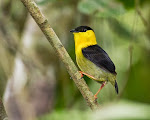
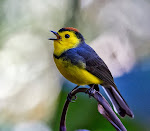
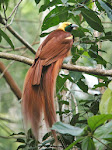




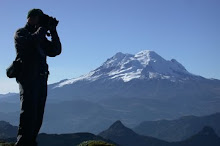


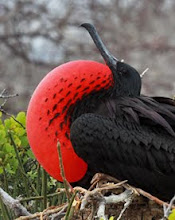
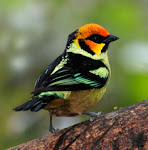
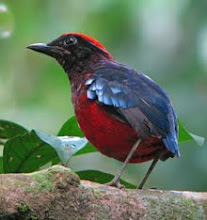

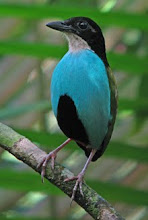
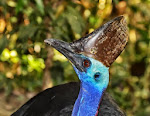
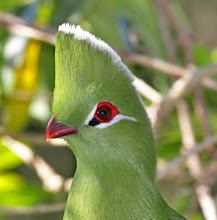
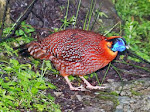

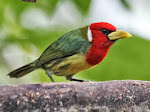
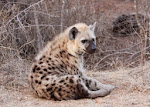
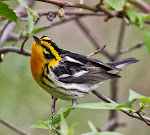

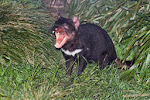
2 comments:
Beautiful photos.
Wonderful, Sam!
Post a Comment